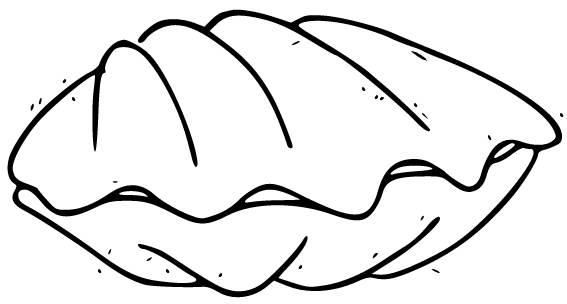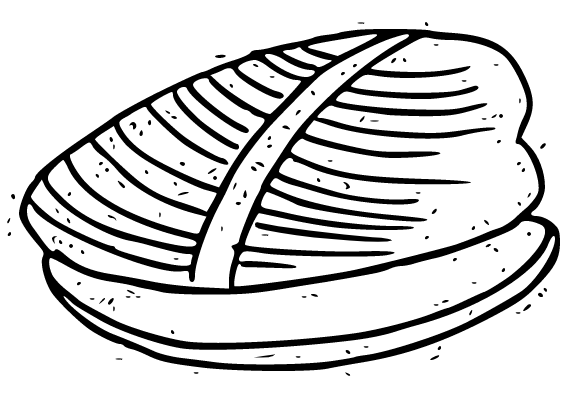-

-
The Discerning Mollusk's Guide to Arts & Ideas
-


Where Are the Snows
Kathleen Rooney
September 2022, Texas Review Press
nyone who reads literary journals encounters plenty of po-faced poetry that equates earnestness with seriousness. Don’t laugh too much: it might spoil your cred. Humor is a privilege and you’d better check it.
Kathleen Rooney’s Where Are the Snows, winner of the X.J. Kennedy Prize, evinces a different sensibility. The title refers to François Villon’s refrain “Où sont les neiges d’antan?” In the francophone world, this expression has entered everyday speech, with the snows of yesteryear symbolizing an irrecoverable loss. And indeed, Rooney’s collection is imbued with a sense of loss, as well as anxiety about the future. At one point, the speaker observes, “This year I gave up hope for Lent.”
But note the pith of that line, the resolute weirdness. Only the dourest reader will fail to detect a note of humor amid the bleakness. The first poem in the collection, “Dress Up,” introduces a pair of Groucho glasses attached to a big nose and moustache—the “beaglepuss”—and serves as a warning for much of what follows.
I never forget a face, but in your case I’ll be glad to make an exception: us to the 21st century so far.
The beaglepuss is a mask. A mask doesn’t only conceal; it can also enable expression. It can allow an individual to speak for herself or even for a community—an “us”—as Paul Laurence Dunbar reminded Americans more than a century ago. Here, a funny mask doesn’t preclude engagement with serious issues of our era.
Rooney’s quarrel with the 21st century, particularly in regard to the contemporary American scene, emerges gradually over the course of 40 poems, with observations about Maga culture, Covid frustration and economics. In “The Production and Consumption of Goods and Services,” the speaker observes
Why should I die for the economy when he would never do the same for me?
‘Please respect others and only take what you need: the rule on complimentary tampons and pads in the bathrooms is basically my plan for the entire economy. …
Freeze and put your hand where I can see it! (I said that to the invisible hand of the market.)
Formally speaking, Rooney relies on free verse stanzas, the best of which possess a well-tuned syntactic snap. There is occasional internal rhyme: “When I can’t visit nature, nature visits me: the fattest sparrow on the bare ash tree.” She also has a fine eye for image: “Babies in strollers wrapped tight as burritos.” Or: “Sick buildings barf their bricky entrails.”
This is poetry that wears its quirk on its sleeve, with free-wheeling associative leaps reminiscent of Gregory Corso’s much-anthologized “Marriage.” Rooney explores the strangeness of literalism (“Why do the woods have a neck anyway?”) and the surreal potential of simile (“A dozen oaths, like a box of spiritual donuts”).
Many poems rely on the premise of the speaker riffing on one word. “To Cherish a Desire with Anticipation” offers 16 stanzas about hope; “Atmospheric Water Vapor Frozen into Ice Crystals” gives us 17 stanzas about snow. A poem called “Foretelling the Future by a Randomly Chosen Passage from a Book” appears to be, literally, an aleatory exercise.
The constraints here are less Oulipian than idiosyncratic. Reading some of these poems, I’m reminded of the BBC radio show “Just a Minute” where a panel of witty guests competes in speaking for one minute about a random topic. The result is entertaining and, in a similar fashion, Rooney seems ready to tackle any subject.
But not all the riffs land home. Some of the poems feel like essays where loosely-associated stanzas replace paragraphs. In “The Surroundings in which an Animal or Plant Lives or Operates,” the speaker muses on the anniversary of Earth Day, the BP Deepwater Horizon oil spill, Saint Jerome, Marco Polo, John Berger and Bernard-Henri Lévy. This is only a partial list, and the cumulative effect is not of greater power or resonance but rather dilution.
The best poems in Where Are the Snows are more personal, where the speaker acknowledges uncertainty and vulnerability. This uncertainty often refers to an earlier period of religious belief. In “A Talisman Attracts, an Amulet Repels,” the speaker asserts
I long to make a pledge to a saint or a way of life. I long to complete a rite. Would sackcloth and fasting put anything right?
I haven’t got faith but I’ve got an aesthetic.
Or, in “One Authorized to Perform the Sacred Rites”
My faith remains gone. And yet my ears strain. A longing to hear someone in the beyond explaining: Follow the sound of my voice.
Similar allusions occur throughout the collection. “Like Christ,” the speaker says, “we show our wounds reluctantly to doubters.” Behind Rooney’s humor and political assertions in Where Are the Snows, there is longing and sometimes pain of a mind bereft of belief but not of the desire to believe. This convergence of worldly worries and immaterial yearning is perhaps the signature quality of this book, where Rooney the artist succeeds best.

Charles Holdefer lives in Brussels. His latest novel is Don’t Look at Me (Sagging Meniscus, 2022).